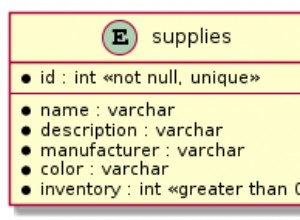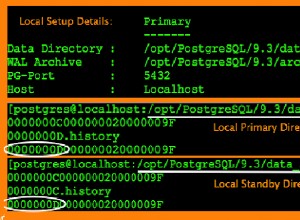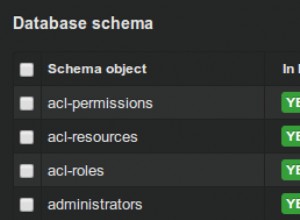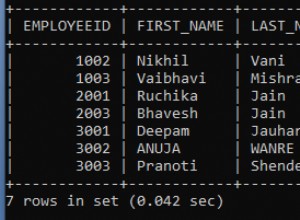Използването на курсор изисква някакъв стандартен стандартен код, за да го заобиколи.
Използването на курсор за извикване на съхранена процедура за всеки набор от стойности от таблицата изисква по същество един и същ шаблон. Вие SELECT стойностите, които искате да предадете, откъдето и да ги получавате (което може да бъде временна таблица, основна таблица или изглед и може да включва извиквания към съхранени функции) и след това извикайте процедурата с тези стойности.
Написах синтактично валиден пример за този шаблонен код, по-долу, с коментари, за да обясня какво прави всеки компонент. Има няколко неща, които не харесвам повече от това да ме молят просто да направя нещо „само защото“ – така че всичко е (надявам се) обяснено.
Споменахте извикване на процедурата с множество стойности, така че този пример използва 2.
Имайте предвид, че събитията, които й се случват, са в определен ред по причина. Променливите трябва да бъдат декларирани първо, курсорите трябва да бъдат декларирани преди техните манипулатори за продължаване, а циклите трябва да следват всички тези неща. Това създава впечатление, че тук има някаква доста изключителна негъвкавост, но това всъщност не е така. Можете да нулирате подреждането, като поставите допълнителен код в BEGIN ... END блокове в тялото на процедурата; например, ако имате нужда от втори курсор вътре в цикъла, просто ще го декларирате вътре в цикъла, вътре в друг BEGIN ... END .
DELIMITER $$
DROP PROCEDURE IF EXISTS `my_proc` $$
CREATE PROCEDURE `my_proc`(arg1 INT) -- 1 input argument; you might not need one
BEGIN
-- from http://stackoverflow.com/questions/35858541/call-a-stored-procedure-from-the-declare-statement-when-using-cursors-in-mysql
-- declare the program variables where we'll hold the values we're sending into the procedure;
-- declare as many of them as there are input arguments to the second procedure,
-- with appropriate data types.
DECLARE val1 INT DEFAULT NULL;
DECLARE val2 INT DEFAULT NULL;
-- we need a boolean variable to tell us when the cursor is out of data
DECLARE done TINYINT DEFAULT FALSE;
-- declare a cursor to select the desired columns from the desired source table1
-- the input argument (which you might or might not need) is used in this example for row selection
DECLARE cursor1 -- cursor1 is an arbitrary label, an identifier for the cursor
CURSOR FOR
SELECT t1.c1,
t1.c2
FROM table1 t1
WHERE c3 = arg1;
-- this fancy spacing is of course not required; all of this could go on the same line.
-- a cursor that runs out of data throws an exception; we need to catch this.
-- when the NOT FOUND condition fires, "done" -- which defaults to FALSE -- will be set to true,
-- and since this is a CONTINUE handler, execution continues with the next statement.
DECLARE CONTINUE HANDLER FOR NOT FOUND SET done = TRUE;
-- open the cursor
OPEN cursor1;
my_loop: -- loops have to have an arbitrary label; it's used to leave the loop
LOOP
-- read the values from the next row that is available in the cursor
FETCH NEXT FROM cursor1 INTO val1, val2;
IF done THEN -- this will be true when we are out of rows to read, so we go to the statement after END LOOP.
LEAVE my_loop;
ELSE -- val1 and val2 will be the next values from c1 and c2 in table t1,
-- so now we call the procedure with them for this "row"
CALL the_other_procedure(val1,val2);
-- maybe do more stuff here
END IF;
END LOOP;
-- execution continues here when LEAVE my_loop is encountered;
-- you might have more things you want to do here
END $$
DELIMITER ;




